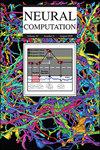Multilevel Data Representation for Training Deep Helmholtz Machines
IF 2.1
4区 计算机科学
Q3 COMPUTER SCIENCE, ARTIFICIAL INTELLIGENCE
引用次数: 0
Abstract
A vast majority of the current research in the field of machine learning is done using algorithms with strong arguments pointing to their biological implausibility such as backpropagation, deviating the field’s focus from understanding its original organic inspiration to a compulsive search for optimal performance. Yet there have been a few proposed models that respect most of the biological constraints present in the human brain and are valid candidates for mimicking some of its properties and mechanisms. In this letter, we focus on guiding the learning of a biologically plausible generative model called the Helmholtz machine in complex search spaces using a heuristic based on the human image perception mechanism. We hypothesize that this model’s learning algorithm is not fit for deep networks due to its Hebbian-like local update rule, rendering it incapable of taking full advantage of the compositional properties that multilayer networks provide. We propose to overcome this problem by providing the network’s hidden layers with visual queues at different resolutions using multilevel data representation. The results on several image data sets showed that the model was able to not only obtain better overall quality but also a wider diversity in the generated images, corroborating our intuition that using our proposed heuristic allows the model to take more advantage of the network’s depth growth. More important, they show the unexplored possibilities underlying brain-inspired models and techniques.训练深度亥姆霍兹机的多层数据表示。
目前机器学习领域的绝大多数研究都是使用算法来完成的,这些算法有很强的论据,指出它们在生物学上是不可信的,比如反向传播,偏离了该领域的重点,从理解其原始的有机灵感转向了对最佳性能的强制搜索。然而,已经提出了一些模型,这些模型尊重人类大脑中存在的大多数生物限制,并且是模仿其某些特性和机制的有效候选者。在这封信中,我们专注于使用基于人类图像感知机制的启发式方法指导复杂搜索空间中称为亥姆霍兹机的生物学上合理的生成模型的学习。我们假设该模型的学习算法不适合深度网络,因为它的hebbian式局部更新规则,使其无法充分利用多层网络提供的组合特性。我们建议通过使用多层数据表示为网络的隐藏层提供不同分辨率的可视化队列来克服这个问题。在几个图像数据集上的结果表明,该模型不仅能够获得更好的整体质量,而且生成的图像具有更大的多样性,这证实了我们的直觉,即使用我们提出的启发式方法可以让模型更多地利用网络的深度增长。更重要的是,它们展示了大脑启发模型和技术背后未被探索的可能性。
本文章由计算机程序翻译,如有差异,请以英文原文为准。
求助全文
约1分钟内获得全文
求助全文
来源期刊

Neural Computation
工程技术-计算机:人工智能
CiteScore
6.30
自引率
3.40%
发文量
83
审稿时长
3.0 months
期刊介绍:
Neural Computation is uniquely positioned at the crossroads between neuroscience and TMCS and welcomes the submission of original papers from all areas of TMCS, including: Advanced experimental design; Analysis of chemical sensor data; Connectomic reconstructions; Analysis of multielectrode and optical recordings; Genetic data for cell identity; Analysis of behavioral data; Multiscale models; Analysis of molecular mechanisms; Neuroinformatics; Analysis of brain imaging data; Neuromorphic engineering; Principles of neural coding, computation, circuit dynamics, and plasticity; Theories of brain function.
 求助内容:
求助内容: 应助结果提醒方式:
应助结果提醒方式:


